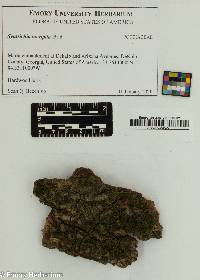
|
|
|
|
Family: Pottiaceae
|
Stems 1-3(-5) mm. Leaves infolded and somewhat twisted when dry, erect-spreading when moist, spatulate, 1-1.75 × 0.5-0.75 mm; margins plane (or somewhat erect), crenulate; apices obtuse, blunt, or emarginate; costa excurrent into a conspicuously tapered, smooth, yellowish or hyaline awn 1/5-1/2 the length of the leaf, yellow or red, rounded and smooth on abaxial surface; basal cells rather abruptly differentiated, often with thickened cross-walls, usually extending slightly farther up the margin than near the costa; distal cells quadrate to hexagonal, 10-15 µm, bulging, with about 4 papillae per cell, the outermost row of cells less papillose. Specialized asexual reproduction as propagula borne at the tip of the stem and in axils of distal leaves, fusiform, green, ecostate, papillose, with an elongate terminal cell, occasionally as several cells. Sexual condition dioicous or autoicous. Seta red, 5-15 mm. Capsule red, 3-5 mm, straight, with a distinct neck; operculum 1-2 mm, red; peristome 0.5-1 mm, basal membrane 1/2 the total length, red. Spores 10-16 µm, papillose. Occasional on bark of trees, rarely on rock; low to high elevations; B.C.; Ala., Ariz., Ark., Calif., Colo., Conn., Ga., Kans., Ky., La., Md., Mo., Nebr., Nev., N.Mex., N.C., Ohio, Okla., Oreg., S.C., S.Dak., Tenn., Tex., Va., Wash., W.Va.; Mexico; South America (Chile); s Europe; e Asia (Japan); s Africa; Pacific Islands (New Zealand); Australia. This treatment follows M. T. Gallego et al. (2006) in including Syntrichia pagorum with forms of S. laevipila reported in the literature from North America, but this is tentative pending a careful reexamination of this complex of small, corticolous plants. These plants might be confused superfically with S. papillosa, but the leaf margins are plane, the abaxial surface of the costa is smooth and shiny, the propagula are leaf-like, and the leaf cells are pluripapillose in S. laevipila. The other taxa with leaf-like propagula, S. chisosa and S. ammonsiana, are never corticolous.
|
This project was made possible in part by the Institute of Museum and Library Services [MG-70-19-0057-19].
Powered by Symbiota




